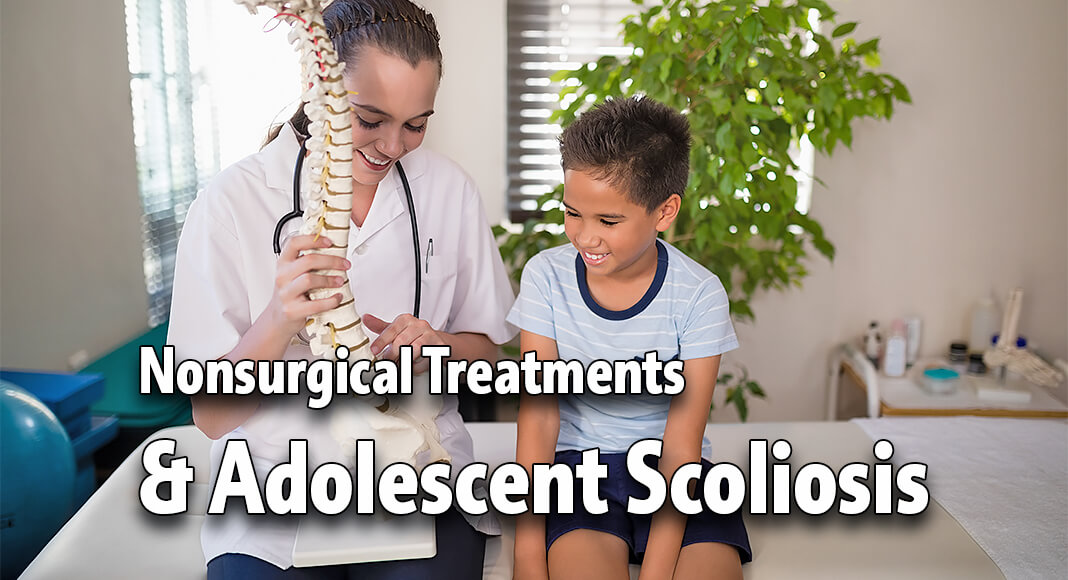
Mega Doctor News
By Children’s Hospital Los Angeles
Newswise – Adolescent idiopathic scoliosis (AIS) is the most common spinal condition in children. But while the most severe cases require surgical treatment, the main goal is to prevent curves from progressing—and avoid the need for surgery.
What’s the best way to do this? Is a back brace the only option? And what should parents do if a child won’t wear a brace to school? Michael Heffernan, MD—a Board-certified pediatric spine surgeon at Children’s Hospital Los Angeles who specializes in scoliosis—answers these and other common parent questions about AIS.
Why did my child get scoliosis?
Scoliosis is basically a curve in the spine that measures 10 degrees or more. AIS is the most common type of scoliosis, but we don’t know what causes it.
Moms sometimes ask me if they did something during pregnancy to cause this, or if their child’s posture or heavy backpack or smartphone use is to blame. And the answer to all that is no. There’s nothing you or your child did to cause this.
Scoliosis tends to run in families, so we believe there is a genetic component. But while that is being studied, we don’t yet know the specific genes or mutations involved.
Does scoliosis always need treatment?
Most kids don’t need surgery, and children with mild curves typically don’t need any treatment at all. However, it’s critical for us to monitor all scoliosis curves so we can see if they are progressing. We know that curves typically progress during growth spurts, so your child will need to have regular exams and X-rays so we can check for this.
What is a scoliosis brace? Will my child need to wear one?
Bracing is the gold standard of nonsurgical care for AIS. We typically recommend a brace when a curve reaches 25 degrees. That said, if we find that a smaller curve is progressing very quickly, we’ll start bracing sooner. Early intervention can make a big difference.
The brace works by essentially pushing on the outer edge of the curve, which helps to equalize pressure on the growth plates in the spine. Bracing has been shown to significantly slow curve progression and help prevent the need for spinal fusion surgery. But it can’t fix a curve that already exists. And once a child is done growing, there’s no need for a brace.
Does nighttime bracing work?
We know from a landmark clinical trial in 2013 that the brace is most effective when worn at least 12 hours a day. Unfortunately, that trial did not study the best time of day to wear it.
But based on how the brace works—by offloading the pressure on the inside part of the curve—it makes the most sense to wear it during the day, when the child is upright. So far, there is no strong data that a nighttime brace is sufficient to change the way the spine is growing.
My child is distraught about wearing the brace to school. What do I do?
The most challenging time for adolescents to wear the brace is at school. There are exceptions—I have a few patients who literally wear the brace on the outside of their clothes, bedazzle it with stuff, rock it, own it, love it. But for other kids, it can be traumatic.
What we do to help is we try to customize the plan of when the brace is going to be worn. Yes, wearing it for 12 hours during the day is the ideal—but it is better to wear the brace for fewer hours, including at night, than to not wear it at all. We work with each family to make this as effective as possible while putting the least amount of emotional burden on the child.
Are there other nonsurgical options for scoliosis besides bracing?
One approach that is gaining some popularity is something called the Schroth method. This is a type of physical therapy that focuses on scoliosis-specific exercises. So far, it has not been shown to prevent a curve from getting worse.
The biggest benefit from Schroth is clinical appearance. Some of the kids have a large trunk shift associated with their curve, and the scoliosis-specific exercises can help with those postural concerns.
Some families choose to pursue Schroth therapy, but it can be expensive, and many insurance plans don’t cover it. It’s not a replacement for bracing, but it can be a positive supplement to it for some patients.
Does it matter where a child receives scoliosis treatment?
I highly recommend going to a pediatric hospital like Children’s Hospital Los Angeles that specializes in scoliosis care. Adult spinal issues are very different than pediatric ones.
For example, an adult spine surgeon might do a handful of surgeries for adolescent scoliosis a year. But at CHLA, we see kids with scoliosis every day. One in five pediatric spine treatments in the U.S. takes place here. That extensive experience in both surgical and nonsurgical care really helps us ensure the best possible care and outcomes for each child.









